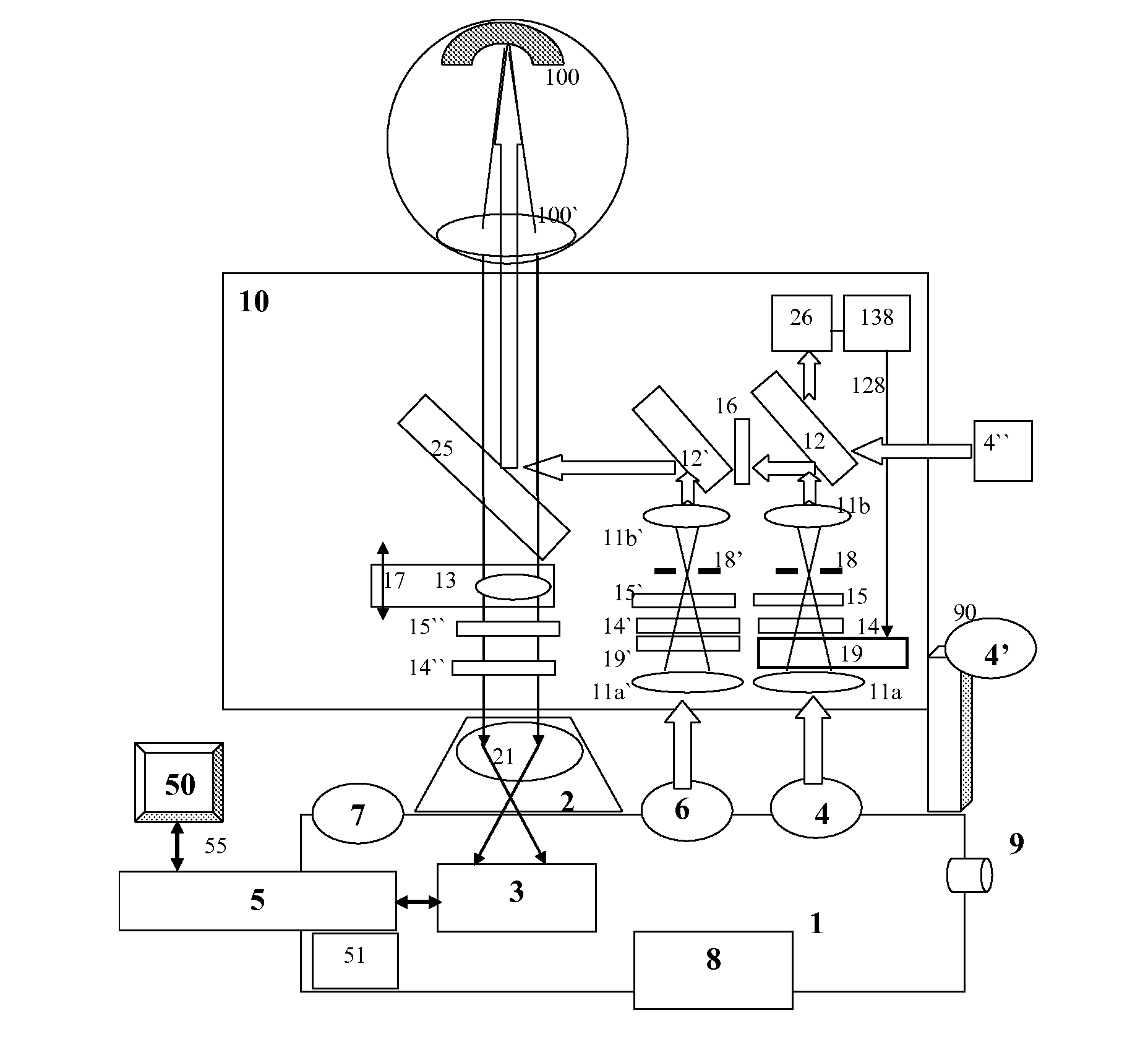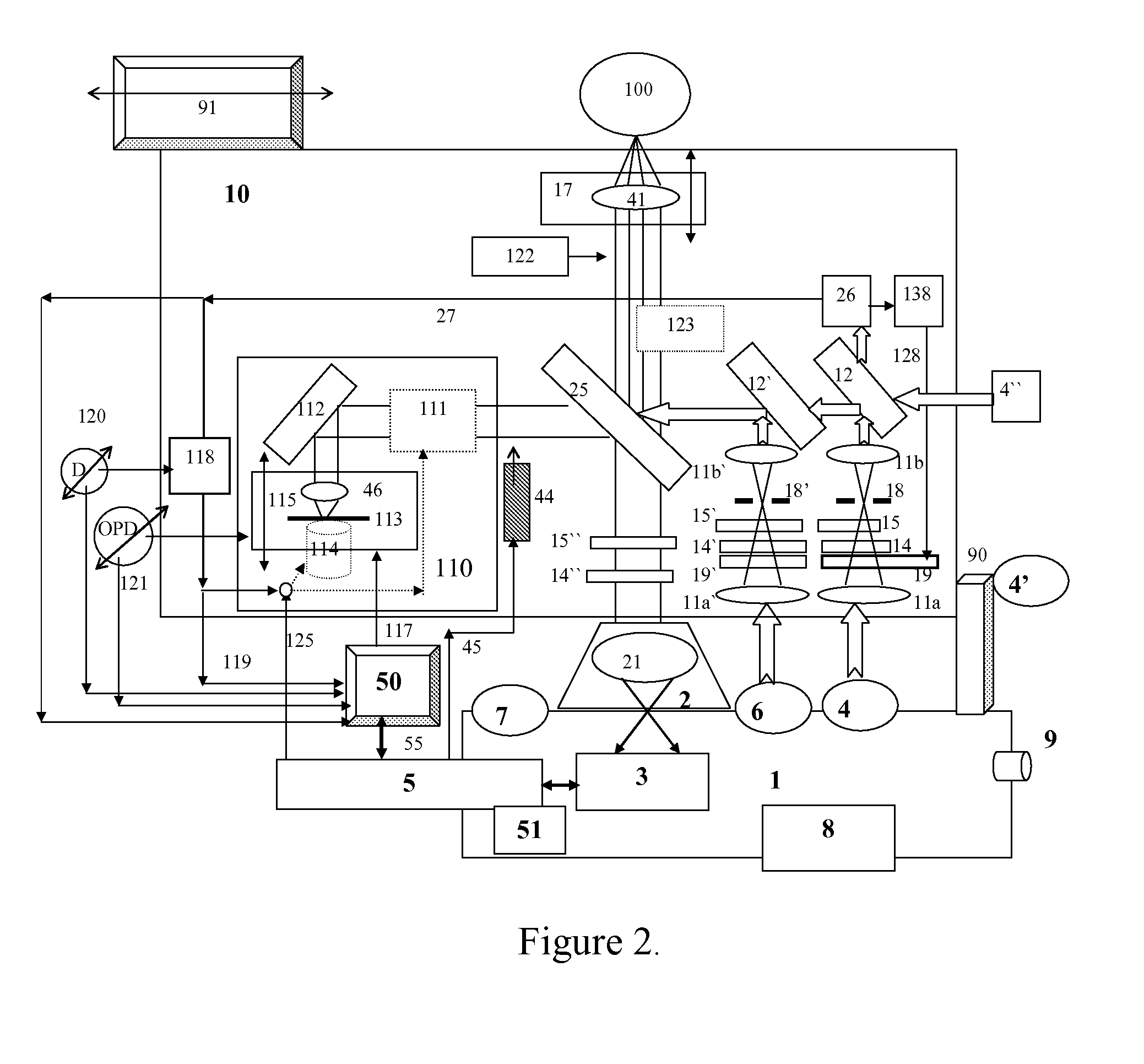Camera Adapter Based Optical Imaging Apparatus
a technology of optical imaging and adapter, applied in the field of optical imaging apparatuses and adapters based on camera adapters, to achieve the effect of reducing nois
- Summary
- Abstract
- Description
- Claims
- Application Information
AI Technical Summary
Benefits of technology
Problems solved by technology
Method used
Image
Examples
Embodiment Construction
[0053]Various features of the present invention, as well as other objects and advantages attendant thereto, are set forth in the following description and the accompanying drawings in which like reference numerals depict like elements.
[0054]A fundus camera for imaging the retina, as well as OCT imagers involve and make use of techniques known in the art, to produce images using CCD cameras or arrays of photodetectors. They use optical sources and special interfaces to image the retina and transfer the reflected light into a 2D pattern projected on the CCD array. By adding a reference beam to the beam conveying the 2D information carried by the object beam reflected from the target, a full field or a coherence radar OCT system is obtained. In order to adjust the position in depth where the image is collected from, the OCT systems have means for longitudinal scanning of the reference path length, have means for controlling the phase and polarization in order to maximiz...
PUM
 Login to View More
Login to View More Abstract
Description
Claims
Application Information
 Login to View More
Login to View More - R&D
- Intellectual Property
- Life Sciences
- Materials
- Tech Scout
- Unparalleled Data Quality
- Higher Quality Content
- 60% Fewer Hallucinations
Browse by: Latest US Patents, China's latest patents, Technical Efficacy Thesaurus, Application Domain, Technology Topic, Popular Technical Reports.
© 2025 PatSnap. All rights reserved.Legal|Privacy policy|Modern Slavery Act Transparency Statement|Sitemap|About US| Contact US: help@patsnap.com



